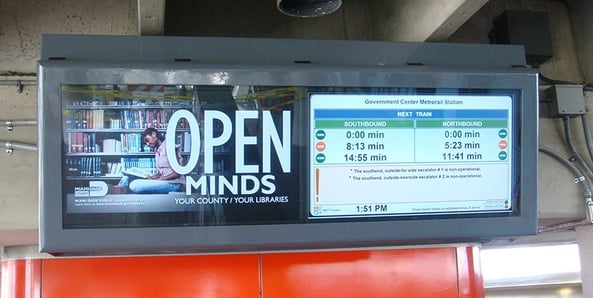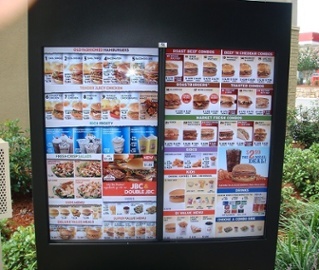In most cases, electronics overheating will ruin chances for their survival and effectiveness.

In order to work properly, most commercial grade LCDs need to reside in an environment that is between 40° F – 104° F. Conversely, there are also LCDs available - in the ever-increasing marketplace - that are referred to as “In Plane Switching” (IPS) panels. IPS displays boast a much higher heat tolerance on the front of the screen, which allows for a less complex cooling scheme. However, when deploying LCDs outdoors, one must also take into consideration the other electronics that will be installed inside of the enclosure. What heat will they give off? In addition to the LCD, thermal management must be adequate enough for the media player, because it is the heart and soul of the entire electronic arrangement.
What temperature factors must be considered?
Heat Produced
Once the required electronics, to be enclosed, are determined by a professional, it is extremely imperative to examine the amount of heat that each device will produce while inside of the LCD enclosure and how the ambient temperatures (outside the enclosure) will affect the operation of the electronics. Most companies list the wattage (BTU/hr divided by 3.413 = Watts) on the product specification sheet (LCD, player device, UPS, etc…), along with recommendations for a smooth operation. Understanding the heat produced by electronics should be critically researched, before purchasing an outdoor LCD enclosure solution.
Installation Location
 The geographic location is particularly vital when determining the proper heating and cooling required for the LCD to survive inside of an enclosure. Regardless of the LCD chosen, the thermal
The geographic location is particularly vital when determining the proper heating and cooling required for the LCD to survive inside of an enclosure. Regardless of the LCD chosen, the thermal
management will be different for an installation in the hot, beating sun of Las Vegas, compared to the varying temperatures in the heart of Boston. In general, urban areas are hotter than surrounding suburban/rural areas. The various reasons, include: the large amount of roads and buildings that generate heat, the lack of vegetation, and the large amount of human bodies that produce heat on their own. Therefore, heat retention cannot be ignored when installing outdoor LCD enclosures around a large city.
Sunlight Exposure
The city or town of the installation is always a factor, but so is the specific location of the enclosure. If the enclosure will be in direct sunlight for the majority of the day, then obviously it will become very hot. However, if the outdoor LCD enclosure will reside in a mostly shaded area, then the temperature will be a tad bit cooler. Direct sunlight or an area with shade will affect the recommended thermal management system. Studies have shown that a shaded area is about 10-15° cooler than a direct sunlit area. The color (black absorbs the most heat) or the material make-up of the enclosure (stainless steel can resist a large amount of heat) can also retain a large amount of heat from sunlight beating down.
It is always wise to work with an enclosure expert that has many years of experience deploying top-of-the-line LCD enclosures in varying outdoor environments. By considering the temperature of the environment in which the enclosure will live, before installation, can greatly reduce costly repairs or the replacement of expensive electronics. An electronic failure, due to overheated elements, can cause serious downtime and cause a company to lose money.



